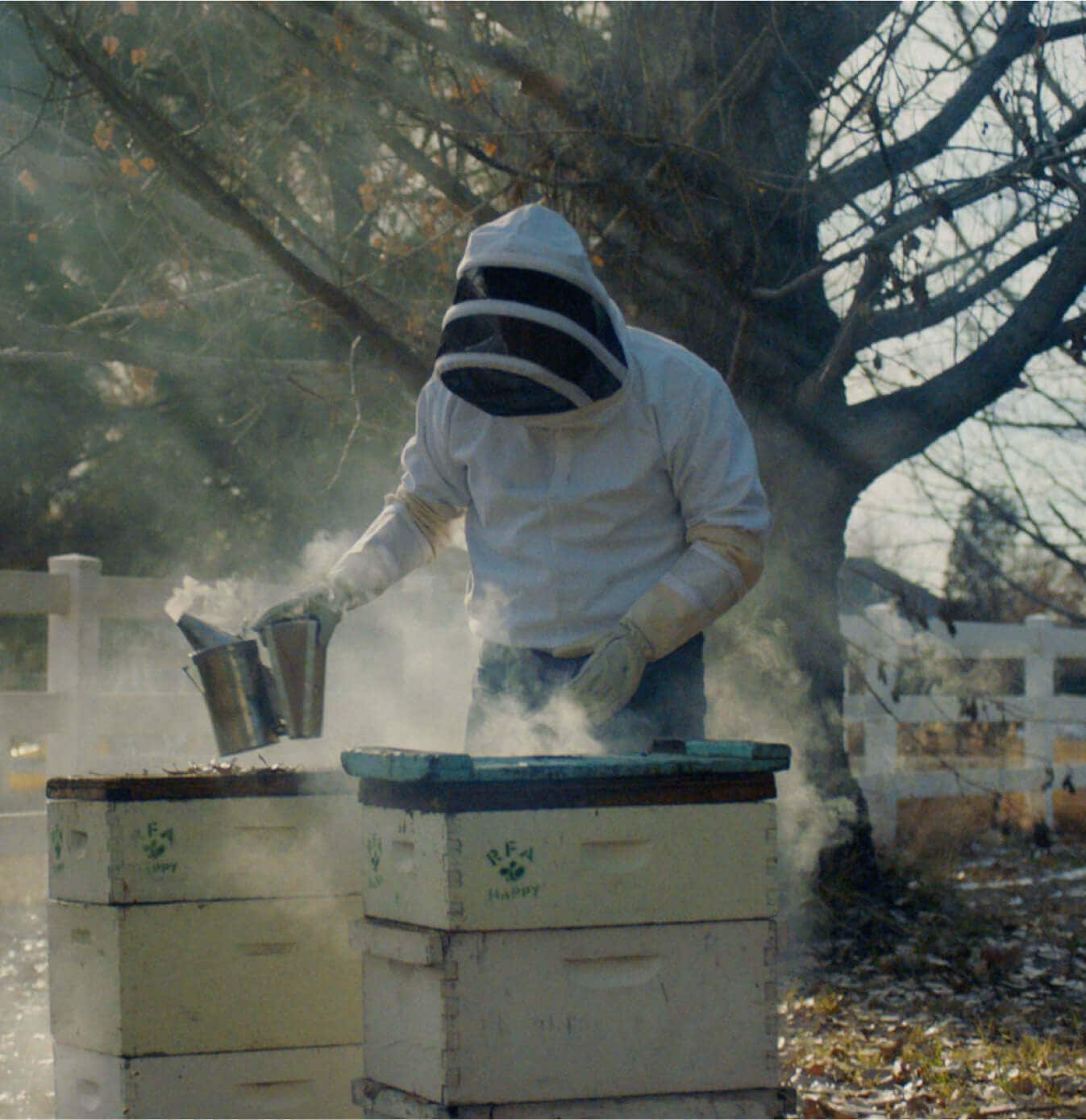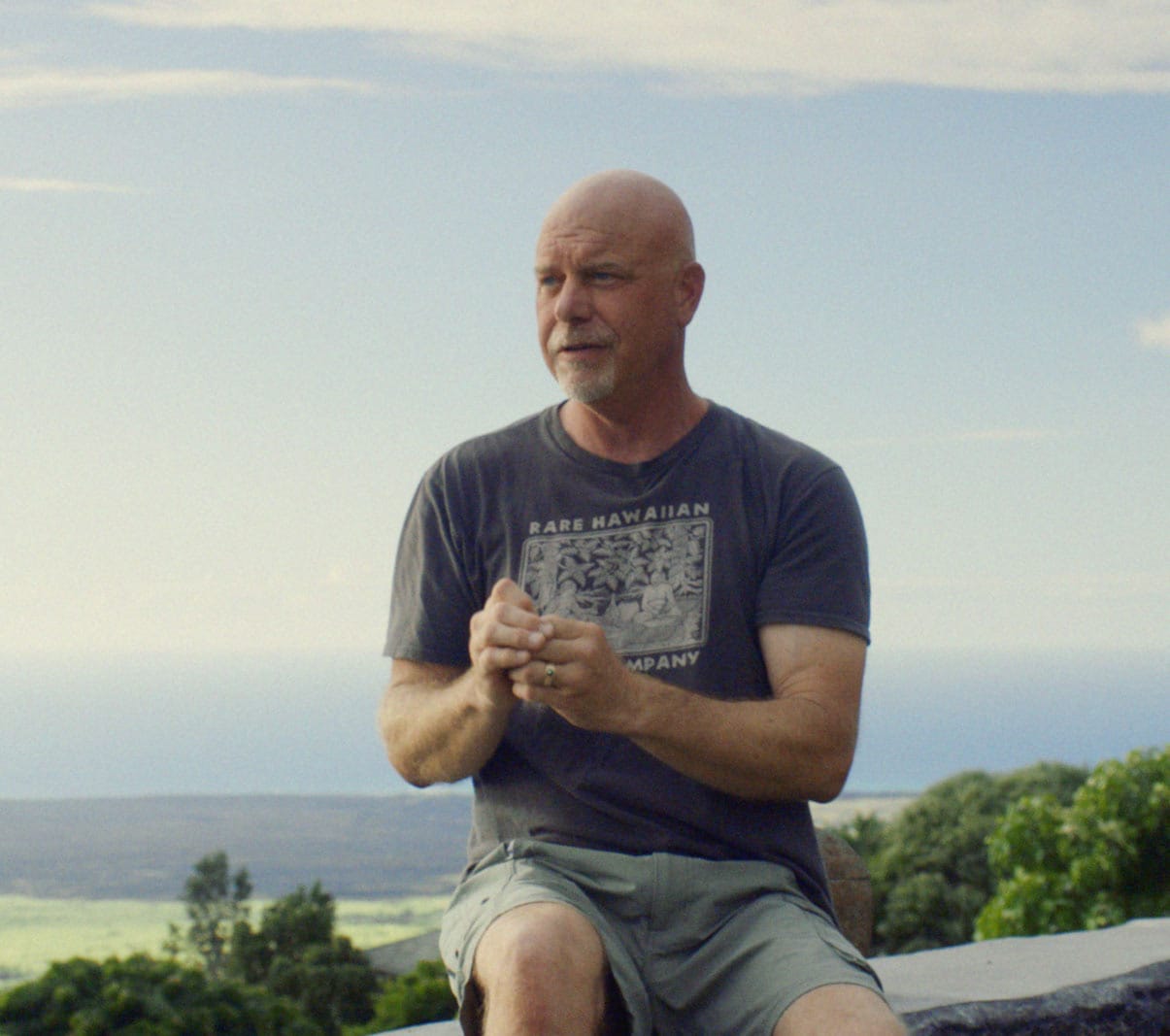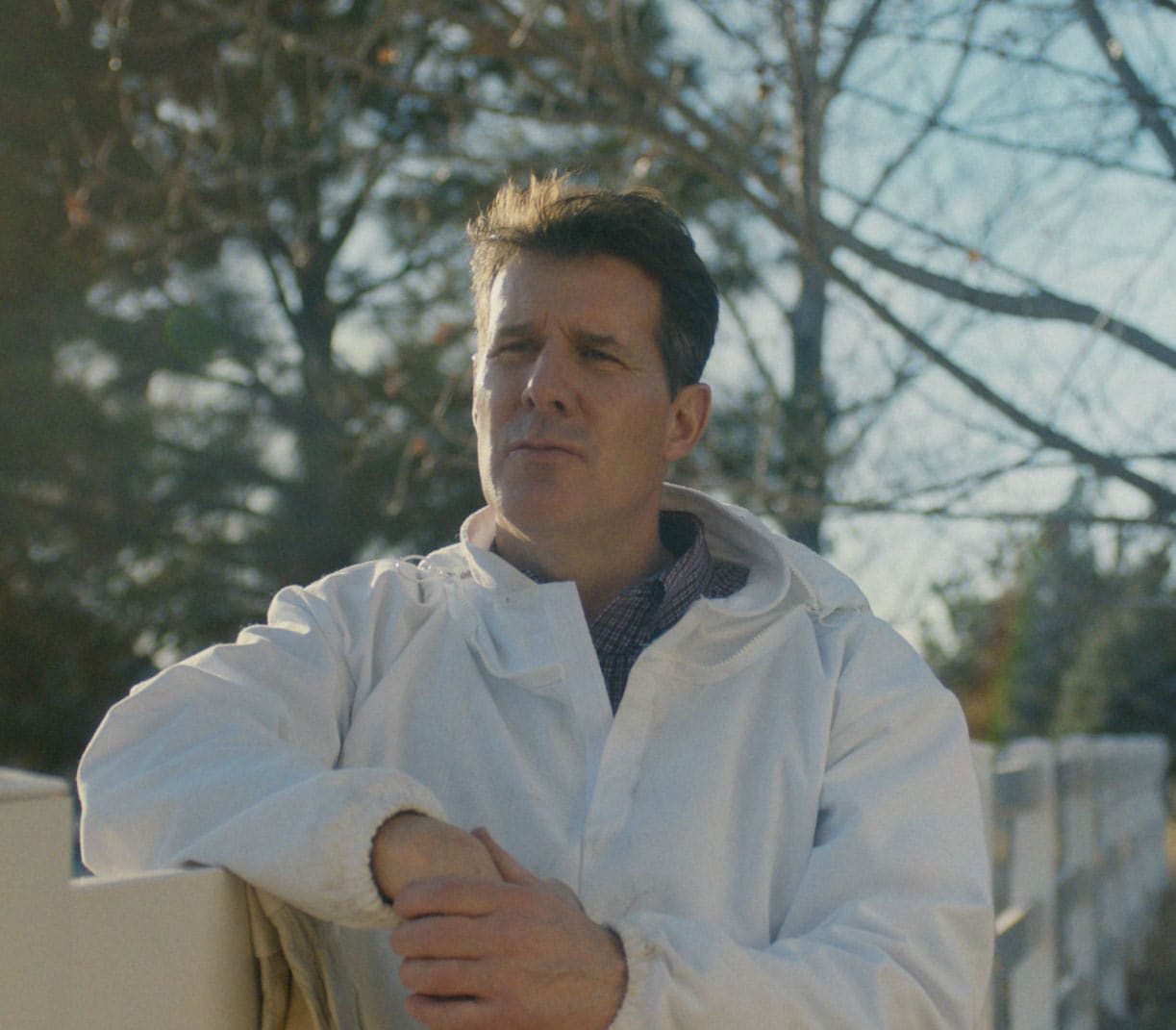AN AMERICAN HONEY STORY
“Nature is infinitely creative. It is always producing the possibility of new beginnings.”
On the desert-like landscape of the dry side of the Big Island of Hawaii, the lush greens and clear blue waters are nowhere to be seen – yet. Instead, red, dry, sand-like soil and the sight of hundreds of thousands of inky Kiawe trees overwhelm the horizon, painting a scenery as unique as the honey created by the trees themselves. The Kiawe – also known as the ‘tree of life’ – is where the local bees will pollinate and create a unique mono-floral honey found nowhere else in the world.
Meanwhile, over 3,000 miles away, Local Hive Honey CEO Tony Landretti is sitting on a barrel of honey in his factory, in front of thousands more multi-colored barrels from all over the United States. Here, in the high plains of Greeley, Colorado, his passion for his place in the American honey story is shining through.
Welcome to the Possibilities of Honey: a story that dates back over 100 million years, told across three seemingly disparate locations around the United States. It’s an expedition honoring ancient traditions, but also a celebration of the art, the process and the opportunities created by a single ingredient: honey.
This story contains three chapters, each marking our journey across the country where we discovered some of the incredible possibilities created by honey – from the migratory beekeeping in Hawaii, to the honey blending in Colorado and finally, to the mead making in California. Our research led us to these three groups of individual, passionate makers whose unique talents transcend the kitchen. Their work and their stories instruct us all about the power of nature – the possibility it produces and the reverence it deserves.
Michael Domeier is the true embodiment of the American Dream, a biologist – turned – entrepreneur – turned – hugely successful Great White Shark expert, traveling around the world to appear on numerous TV shows before he somehow found his way to the honey business. No matter the subject or challenge at hand, what sets Michael apart is his thirst for new experiences, his love of nature and his desire to never stop learning or growing. Michael turned to honey after deciding to keep a single beehive at his home in Waimea, Hawaii. “I became fascinated by the biology of the bees”, he confesses. More than anything, it is this man’s passion that defines him. It is a passion that is infectious.


Michael and his wife and business partner, Amy, own and run The Rare Hawaiian Honey Company, an operation that spans the Puako and Waimea Bay region of the Big Island of Hawaii. “A year later, we had forty hives!” Michael continues. Now, it includes over 400 remote hives that the company are able to pick up and move depending on the migration of the Hawaiian bee as it pollinates. Once one bloom has dried up, they find another part of the island that has another species of plant that’s blooming, and the hives are moved there. It’s a simple process that Michael proudly calls “chasing the bloom”. But, more importantly, this process symbolises his and his company’s spirit of adventure, of never resting on their laurels and of always pushing forward towards an even greater, sweeter product.
“The Possibilities of Honey didn’t start with the bee, but with a dream.”
The company’s signature honey is created from a thousand-acre Kiawe forest on the dry side of the Big Island. Kiawe (pronounced “kee ah’ vay”) is the Hawaiian name for a species of tree that is native to Ecuador and Peru, but has somehow found its way to this remote corner of the United States. From this unique Kiawe flower – nicknamed ‘the tree of life’ – the company produces one of the world’s rarest gourmet, mono-floral honeys, unique in how it naturally crystallizes into a unique, creamy white. After we spend a sweltering morning in the bee yard with Michael’s team – their once white bee suits long turned grey from years of use – we see this process unfold at the company’s extraction facility. Named the ‘honey house’, this is where the trays from the hives are fed into machines, the honey inside falling gloriously into a steel drum. In the bottling room, a final stamp of approval: the beautifully designed Rare Hawaiian label.
During the few days that we are with him and his team of beekeepers, Michael takes us on a tour of the Big Island, from one stunning Hawaiian location to another. We go from the dry, desert-like terrain of the Kiawe forest to the lush green fields surrounding the honey house and, finally, to his and Amy’s home, a beautiful residence overlooking Kona airport to the west, where every evening the two of them sit with a pot of honey and the odd glass of wine to watch the sun set over the Pacific Ocean. As Michael serves as tour guide, his stories are free flowing. He tells us of how he first mentioned the idea of beekeeping to Amy, how her initial reaction was lukewarm but how she has now become as addicted to the process as he. When we settle in to enjoy the sunset, we hear Amy’s side of the story. She sees herself and Michael as the stewards of the bees, and her voice crackles with emotion as she confesses “I can’t describe what it means to me”. It’s a magical moment to conclude a magical few days. The honey itself is simply an added bonus to spending time with such unique American makers.


But what a bonus it is. Our production team finally gets to taste the honey and, as Michael watches us closely, all his words ring true – this has a taste and texture a million miles away from the on-the-shelf honey you find in a squeeze bottle at your local convenience store. It’s simply miraculous, as if we are tasting nature itself. As our team sit there in silence, it is Michael who finally speaks the words of a passionate maker who has created something he’s truly proud of. “When I let someone taste the honey and I watch their face… that’s what it’s all about”.
Continue The Journey...
Family business’ is a term that’s used a lot but in the case of Local Hive Honey the name really does apply. Not just because the company was founded by the Rice family in 1924, but because the operation itself – housed in a stunning factory location in Greeley, Colorado – is one big extended family of passionate makers, a meticulous human-crafted operation that begins each day with a morale-boosting team high five and ends with the bottling and boxing of blended honey sourced from over 200 beekeepers around the United States. When you walk into the main factory reception area, a wooden sign emblazoned with the word ‘Family’ is hanging to greet visitors. As we would soon discover, this is an ethos that permeates the whole process at Local Hive Honey.


Now in its 5th generation, Local Hive remain a leading provider of authentic, raw and unfiltered honey. It is in their unique blending methods that they are able to create different varietals of honey by combining various florals from around the country. “It’s kind of like a chef in the kitchen”, Local Hive CEO Tony Landretti tells us emphatically as he proudly walks us around the aisles of multi-coloured barrels (itself an incredible sight to behold), “When they’re taking different ingredients, putting them in a dish, well we’re doing the same thing here”.
After factory foreman Mike runs the Local Hive team through the plan for the day, each member goes their separate ways – some to the lab where they run various tests on samples that have just arrived by truck, others to the ‘warming room’ (a visitor highlight) where the vast barrels are forklifted in and seemingly golden lava emptied into the steel containers below, and the remainder to the bottling floor, where a mesmerising factory line is fed along a conveyor belt before the perfect amount of molten honey is poured into bottles beautifully labelled by state or honey type.


Once the bottling is complete, all that’s left is for Tony and his team to deliver the product to the consumer and, this being Local Hive, this isn’t only achieved by vehicle, but often by hand. We join Tony and a young member of the Local Hive family in Tony’s truck as they deliver a fresh box of Colorado honey to a local convenience store. On route, he discusses the recent varietals with his young protege, educating her on the product’s uniqueness and filling her in on the story of the customer they are on the way to meet. Once at the store, Tony leads the way, striking up a familiar conversation with Susan the store owner behind the counter, and even going so far as to pull out a bottle of the honey and discussing in detail the colours and textures of the product based on the season’s climate and weather patterns. Tony might be a CEO, but he could not be more attached to and inspired by the process by which his product is made or indeed the product itself. “I wouldn’t mind delivering products every day to customers”, he tells his mentee on the way to the store, “I think that would be a lot of fun”. You get the sense that this is really where Tony’s passion lies, in the simplicity of creating a beautiful product and giving joy to his customers by sharing it with them directly.


“We believe consumers want that product that’s from their front yard”, Tony continues. We soon see that he believes this in a very literal sense as we travel from the store to his home where he shows us two hives he now keeps in his backyard because he wants to better understand the process of beekeeping himself. A smoker and hive tool at the ready and, with the last of the Colorado afternoon creating stunning beams of light across the scene, Tony lifts out a tray to reveal a swarm of hungry bees. He watches them with fascination, while simultaneously telling us about the importance of the American beekeeper and of the honey bee to our country and its agriculture. This is what gives meaning to his role in this extraordinary, long revered process.
Ultimately for Tony, it’s all about the process of making and the joy this brings others, whether that is the Local Hive family working as a team and learning around him, or the customer enjoying the finished product. “When you get feedback from consumers and they compliment us on the things we’re doing, helping educate people and giving back in the community, for me personally that is what I find very rewarding”.
The Final Step of The Journey...
No image epitomises Gordon Hull’s unique lifestyle better than the one of him boxing up fresh bottles inside his meadery, his daughter rolling past on her scooter in the golden Californian sunshine just outside the door. Gordon is a true American original, a man of quiet grace and fierce integrity. A man who loved a fine tasting beer and then decided to combine the process by which beer is brewed with the champagne method of creating sparkling wine. “Mead is simply a wine made from honey instead of grapes”, he explains.
As a maker, Gordon’s objective is as clear as the bottles into which he pours his mead: “To try and preserve as much of the flavour compounds that are in the honey as possible… What we want our customers to taste is the nectar from the flower from which the honey is composed”. It’s a fascinating concept, to reveal to the person tasting the mead the botanical essence and specificity of the flower from which the honey came. After all, he tells us, “We’re attracted to the same things the honey bees are”. It is this method of mead making that we are here to watch Gordon undertake, a method he has perfected over 20 years.
Gordon – a true advocate of quality – does everything himself. Indeed, as we watch him work through each stage of the mead making process in his vast yet modest meadery, there is not another soul in sight. Gordon brews, riddles and bottles each batch of mead alone, a process that takes weeks at a time, but it’s clear he wouldn’t want it any other way. “I enjoy working with my hands”, he explains, “I like the idea of producing something that’s coming from the earth”. When the mead is busy brewing, Gordon tends to the farmland surrounding the property, operating his tractor and saying hello to the guests that may have wandered in for a spot of mead tasting, sitting on the picnic benches lining Heidrun’s stunning property. This tasting is overseen by mead specialist Michael, who talks the guests through each varietal, explaining which flowering plants from which corner of the world the honey used originated from. “We call it the closest you can get to tasting the flower – short of actually eating it!” Michael laughs proudly.


Gordon and his family took over this old dairy farm in Point Reyes Station in Northern California in 2008, quickly making the changes needed to turn it into a mead-making operation. Point Reyes is a small town located in western Marin County and home to the beautiful Point Reyes National Seashore as well as dense Redwood forests made famous by photographers and filmmakers. “The California spirit is so appealing to us, where creativity is encouraged,” Gordon tells us, “what a great place to bring our children up in”. Gordon’s family live on the farm – just a stone’s throw from the meadery itself – with his commute to work a short walk up a beautiful driveway lined with trees. He explains to us the term ‘terroir’, meaning a sense of a place, and the environmental factors that contribute to that place’s character. “In the case of meads, what types of flower are growing in a particular geographic region… those flowers create a sense of place for honey”.


It is in talking about his family that Gordon’s calm, measured demeanour and slow and deliberate way of speaking at last waivers as he discusses his children and the importance of having them here on the farm: “They get to interact with nature, learn about the importance of where our food comes from and how to live on the land. Those are kinds of lessons that are best taught hands on”. For a moment, his guard drops and it is just a father that shines through, a father that decided to carve his and his family’s own legacy in a special kind of paradise here along the Golden Coast. Gordon’s lifestyle is that of a true American maker; a committed and humble Californian creative whose connection to nature and the world around him feeds directly into his profession and the process by which he provides for himself and his family. As he himself puts it, the diversity of the country’s flower species serves as Heidrun’s palette, with winemaking as its canvas. For Gordon, the natural world and creativity come hand in hand. You simply cannot have one without the other.
Yummly recipes
Related Articles
-
 Food & Drink March 16, 2020 | 5 min read Going Rogue in the Kitchen Eventually, I did what most people do when they’re feeling confident in the kitchen. I whipped up a pot of homemade soup without any instructions.
Food & Drink March 16, 2020 | 5 min read Going Rogue in the Kitchen Eventually, I did what most people do when they’re feeling confident in the kitchen. I whipped up a pot of homemade soup without any instructions. -
 Food & Drink March 16, 2020 | 6 min read Delicious Differences: Potatoes Mashed potatoes. Fried potatoes. Hash browns. Baked potatoes. The list goes on for all the ways you can prepare potatoes in the kitchen.
Food & Drink March 16, 2020 | 6 min read Delicious Differences: Potatoes Mashed potatoes. Fried potatoes. Hash browns. Baked potatoes. The list goes on for all the ways you can prepare potatoes in the kitchen. -
 Food & Drink June 11, 2020 | 6 min read Food Traditions Family traditions don’t always have rhyme or reason, but they give us something to look forward to, and remind us to be grateful.
Food & Drink June 11, 2020 | 6 min read Food Traditions Family traditions don’t always have rhyme or reason, but they give us something to look forward to, and remind us to be grateful.












